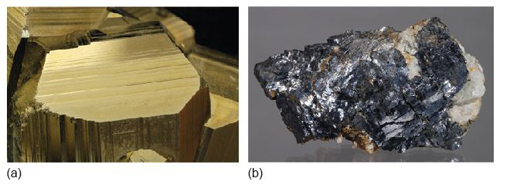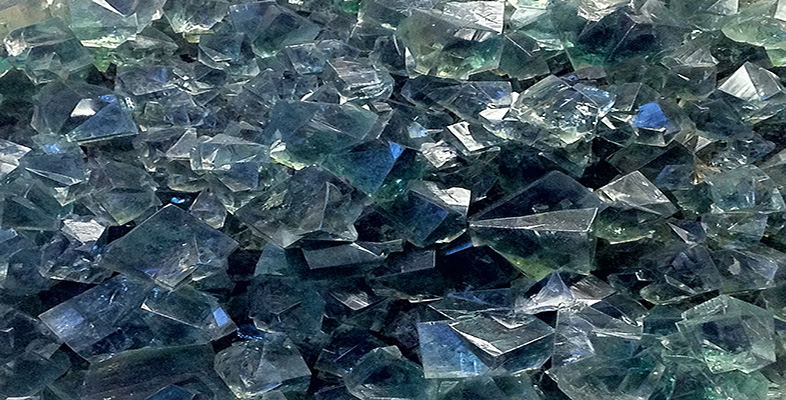3.7.3 Sulfides
Sulfur is an essential constituent of sulfide minerals, in which it commonly bonds with metals such as copper, lead and zinc. Sulfides can be important economically when they are concentrated in mineral deposits. They often occur as vein mineralisation, deposited by hot, watery fluids passing through fractures, fault zones and permeable rocks. Some are formed by segregation processes in sulfur-rich magmatic systems. Mining followed by smelting of the sulfide minerals allows the metals to be extracted. Examples of economically important sulfide mineral deposits include the Pb-Zn deposits of the Mississippi Valley and the vast disseminated Cu deposits of the Andes.
Pyrite (FeS2) (Figure 63a) is the most commonly encountered sulfide mineral in vein deposits and is also found in igneous, metamorphic and sedimentary rocks. Other common sulfide minerals in vein deposits include galena (PbS) (Figure 63b), sphalerite (ZnS) (Figure 15c) and chalcopyrite (CuFeS2).

